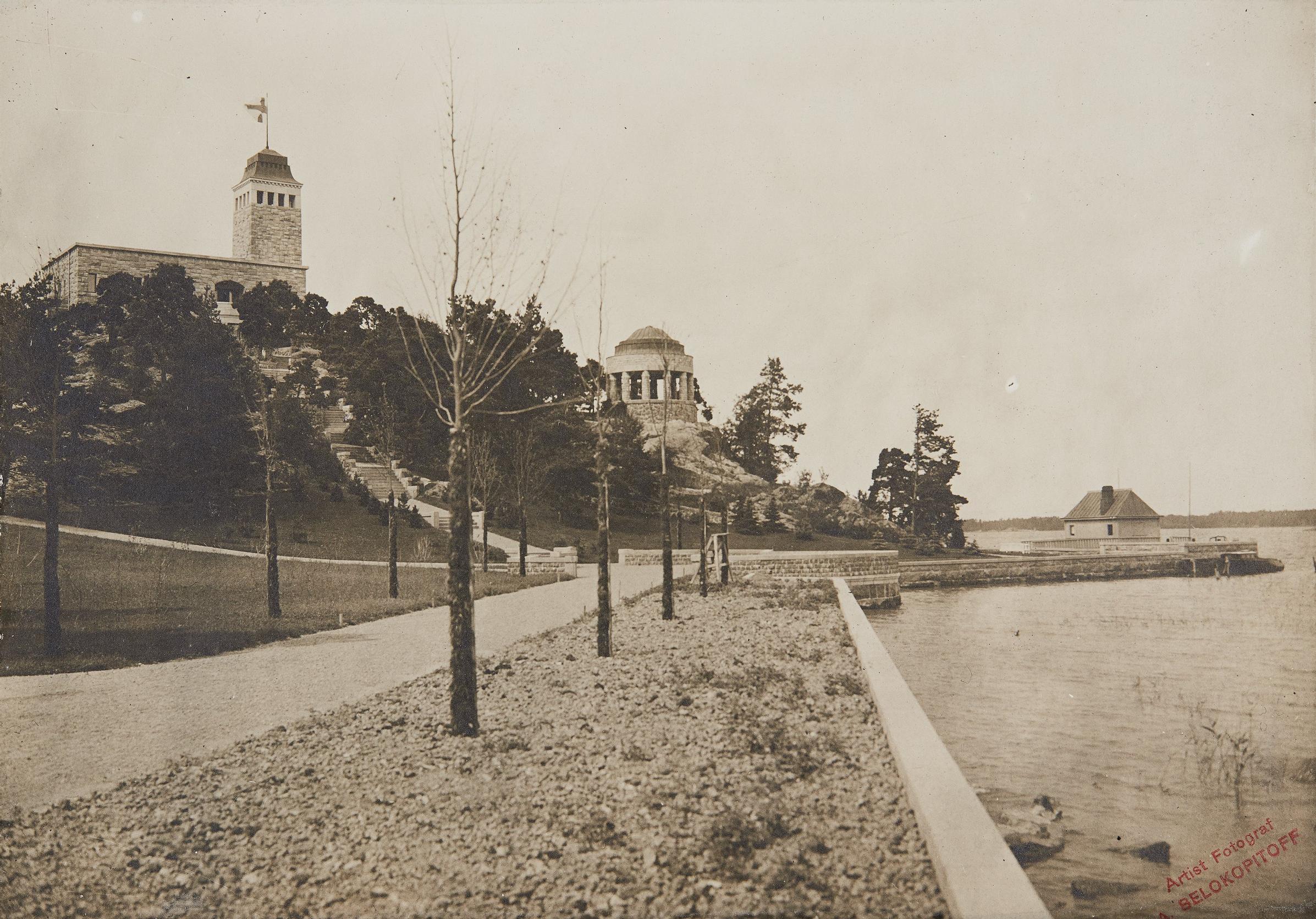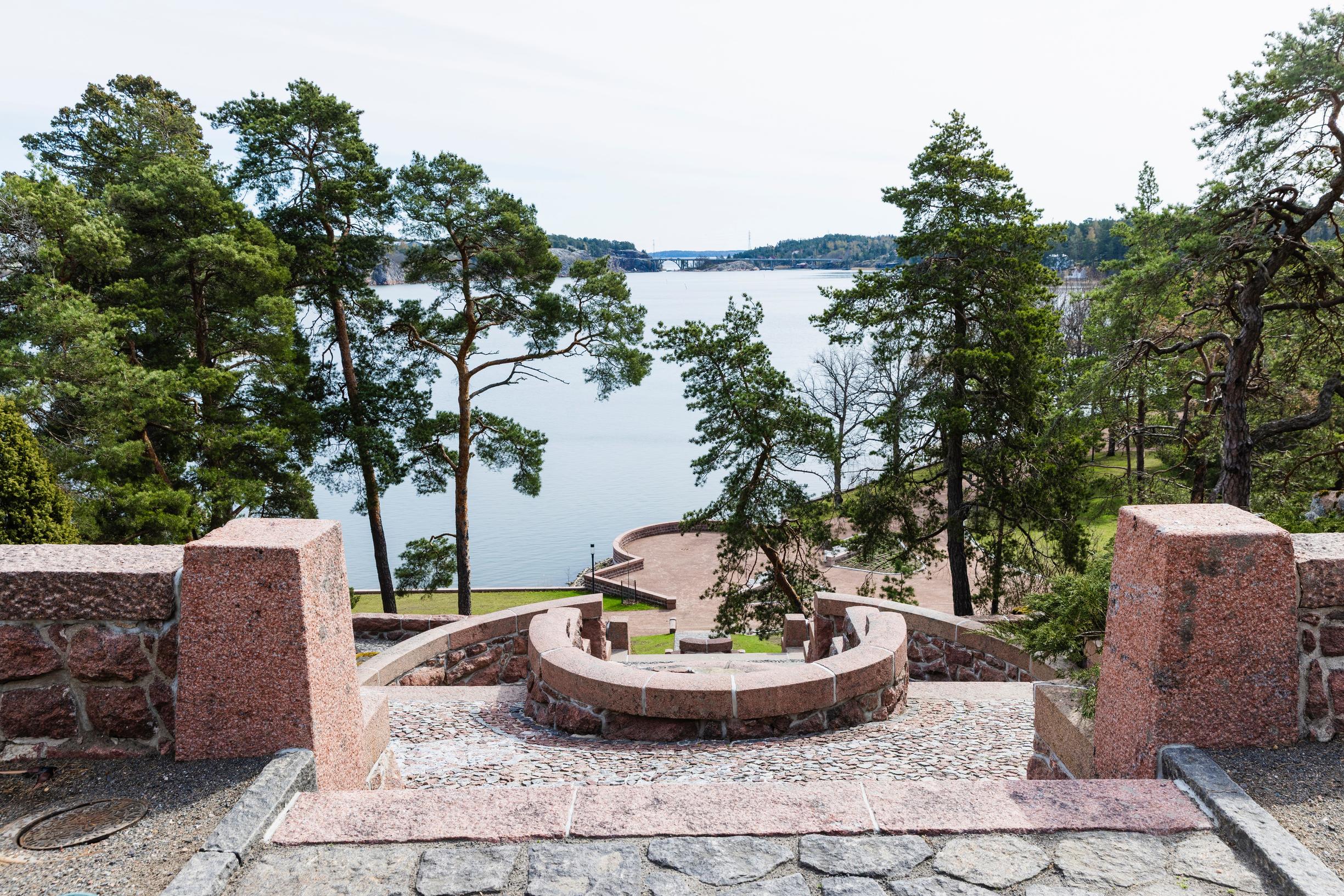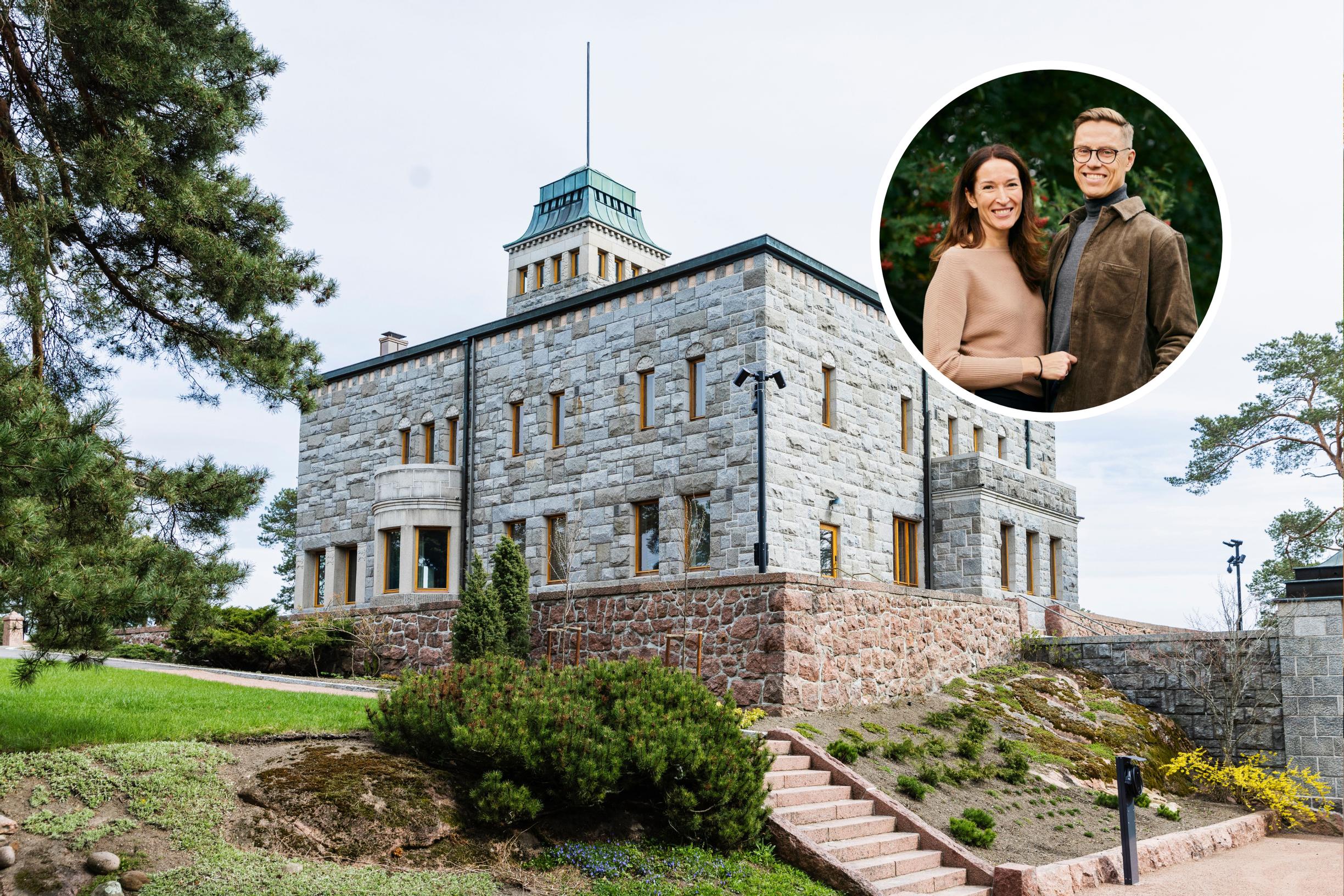
Finnish president Alexander Stubb’s summer residence—Kultaranta returns to glory after a grand renovation
Finland’s current President of the Republic, Alexander Stubb, and his spouse, Suzanne Innes-Stubb, will spend their first summer at Kultaranta after years of extensive restoration. In summer, anyone can explore the garden that surrounds the presidential summer residence.
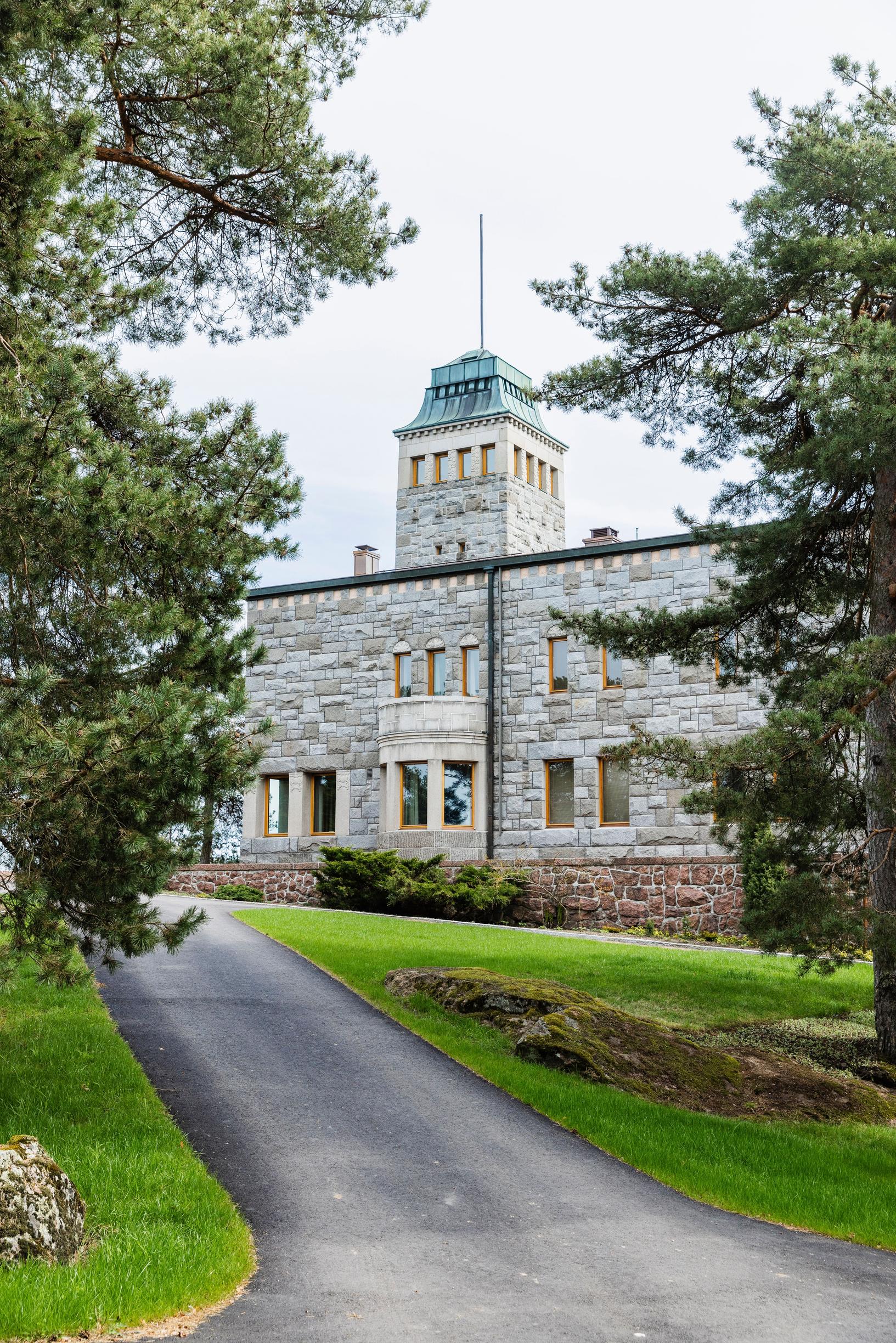
Visible right at the front gate, the Granite Castle stands on a cliff 18 meters above sea level. Designed by the Finnish architect Lars Sonck in 1915, this is the main building of Kultaranta, the summer residence of the president of Finland. The most scenic route to the Granite Castle terrace leads through the recently renovated and restored park, still mostly bare in early spring. Soon, the landscape will flourish with hundreds of newly planted perennials and summer flowers grown in Kultaranta’s own greenhouses.
The formal garden’s strict lines, symmetry, and straight paths reflect early 20th-century garden design. The impressive park was created by Helsinki’s city gardener Svante Olsson and his son Paul, and most of the plantings and structures date back to 1916–20.
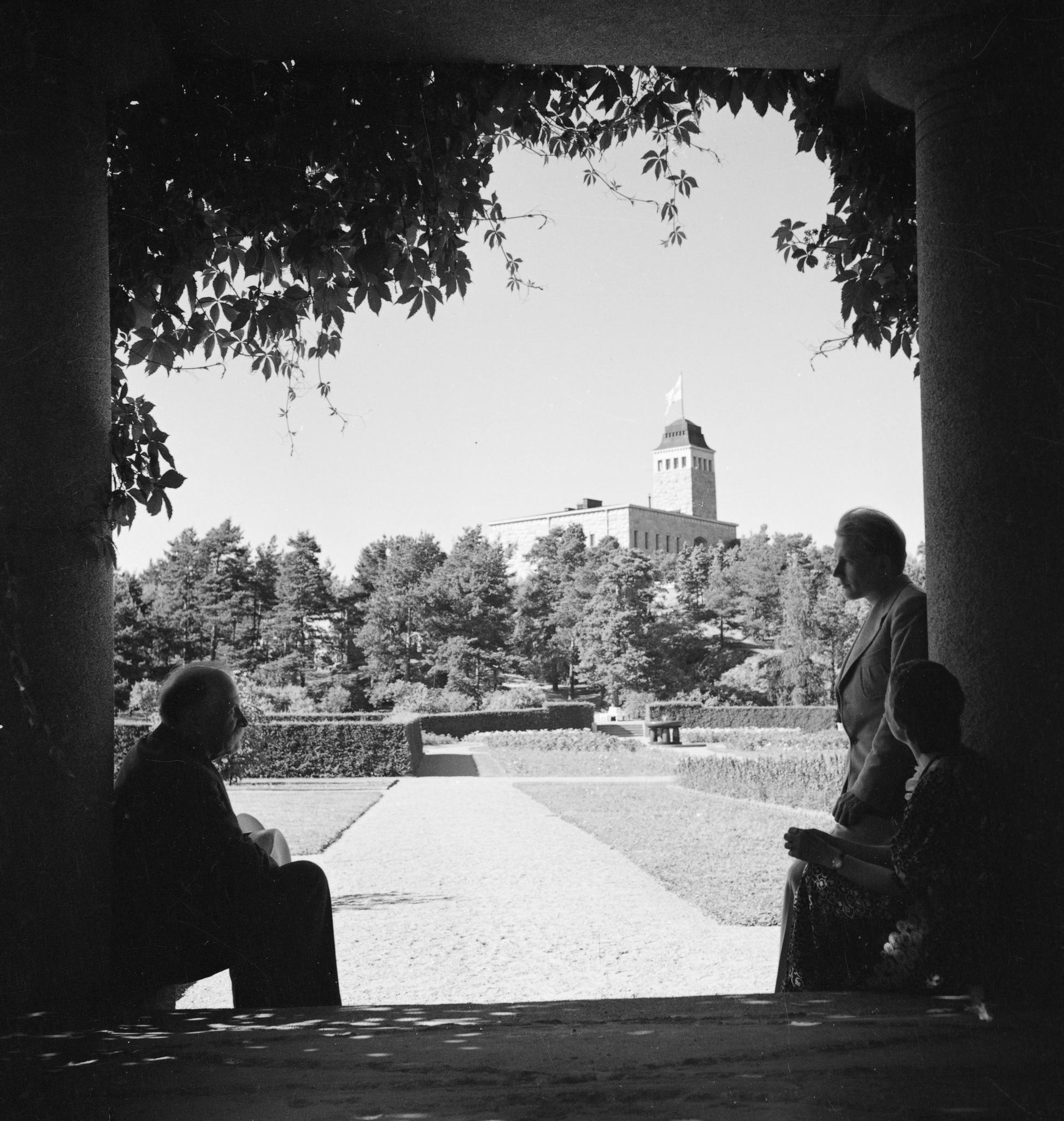
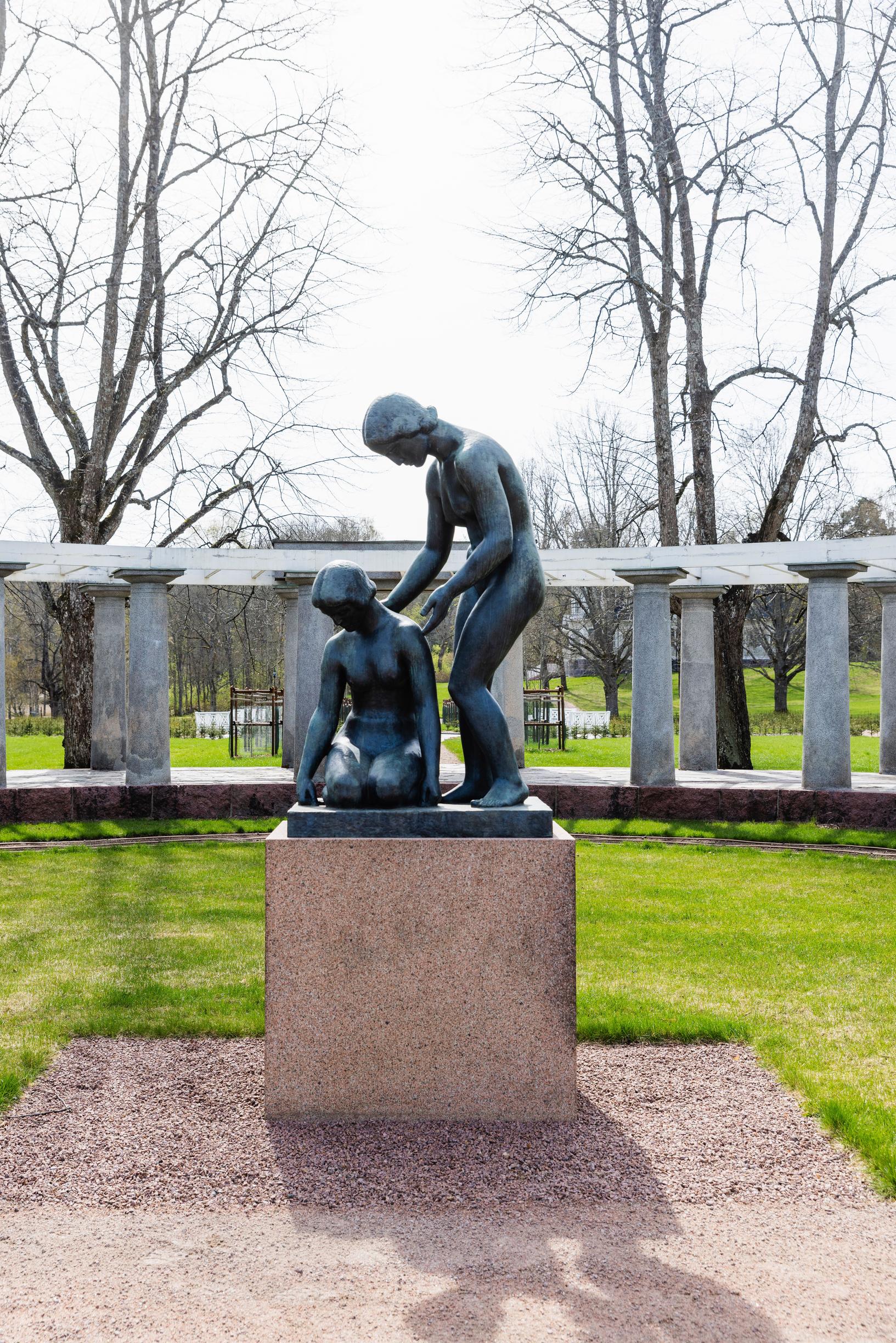

The garden has been updated with newly planted trees and a new spruce hedge to replace the previous, century-old one in poor condition; the 850-meter-long hedge took 4,250 seedlings. The plantings in the Suomi Garden and the 1,712 white, red, and pink roses in the Rose Garden reach their peak in July–August.
All the pavilions, from the Garden Pavilion to the Music and Forest pavilions, have been renovated, and some have even regained their original color schemes. The centerpiece of the park, the arch pergola designed by W.G. Palmqvist, is once again in prime condition. A new, modern irrigation system makes care and watering easier. Ornamental white wooden benches, made according to the old designs, await guests—and they’re quite comfortable.
Closer to the Granite Castle, the formal garden transitions into a more natural Forest Garden, where you can see the town of Naantali and its convent church. There are several ways to get to the Granite Castle, completed in 1916: passing under the gateway building Pikkulinna (“small castle”), climbing the impressive and steep granite steps carved from local stone, or taking the old sled track route. Let’s choose the latter, which leads straight to Paratiisi (“paradise”)—an area with plantings and water features that sparkle right in front of the castle’s main entrance.
All of Kultaranta covers 55 hectares, with 15 hectares enclosed by a fence, holding the gardens and the most significant buildings. It’s no wonder restoration work went on from 2018 until the end of last year. The planning began a couple of years before that.
Kultaranta’s garden and granite castle in September 2023:
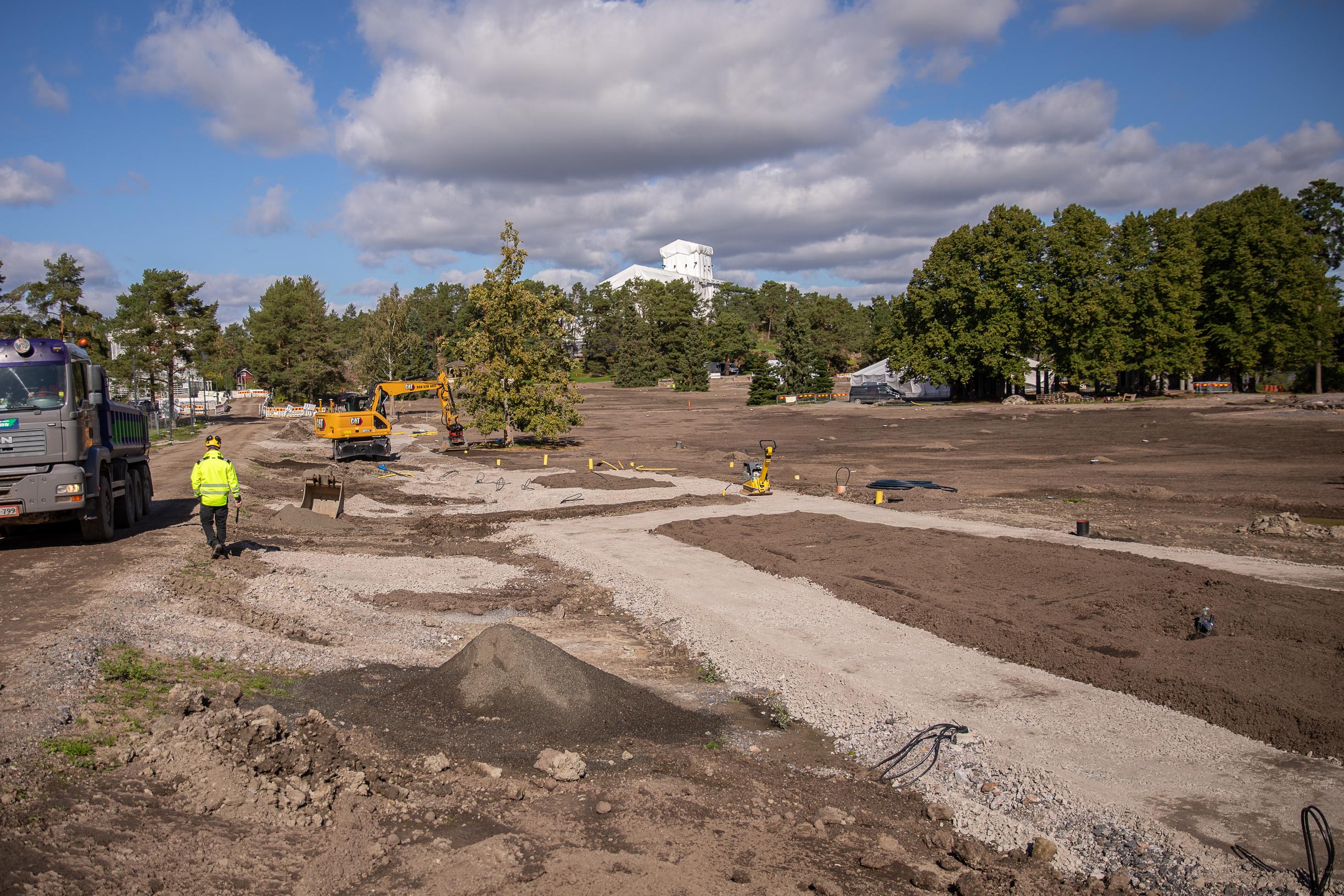
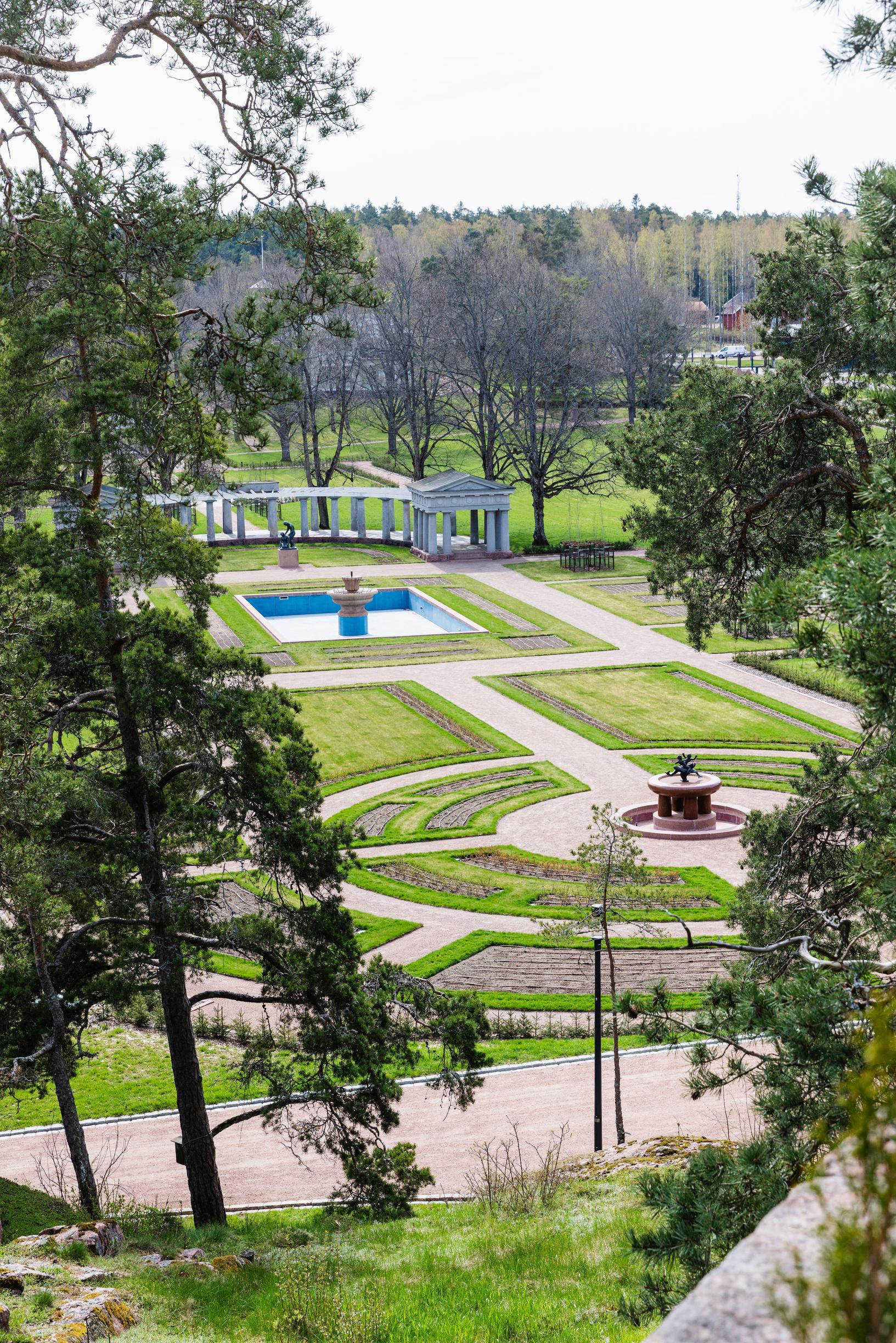
While the garden is varied, surprising, and enchanting, the Granite Castle itself is grand and imposing, perhaps even a bit austere.
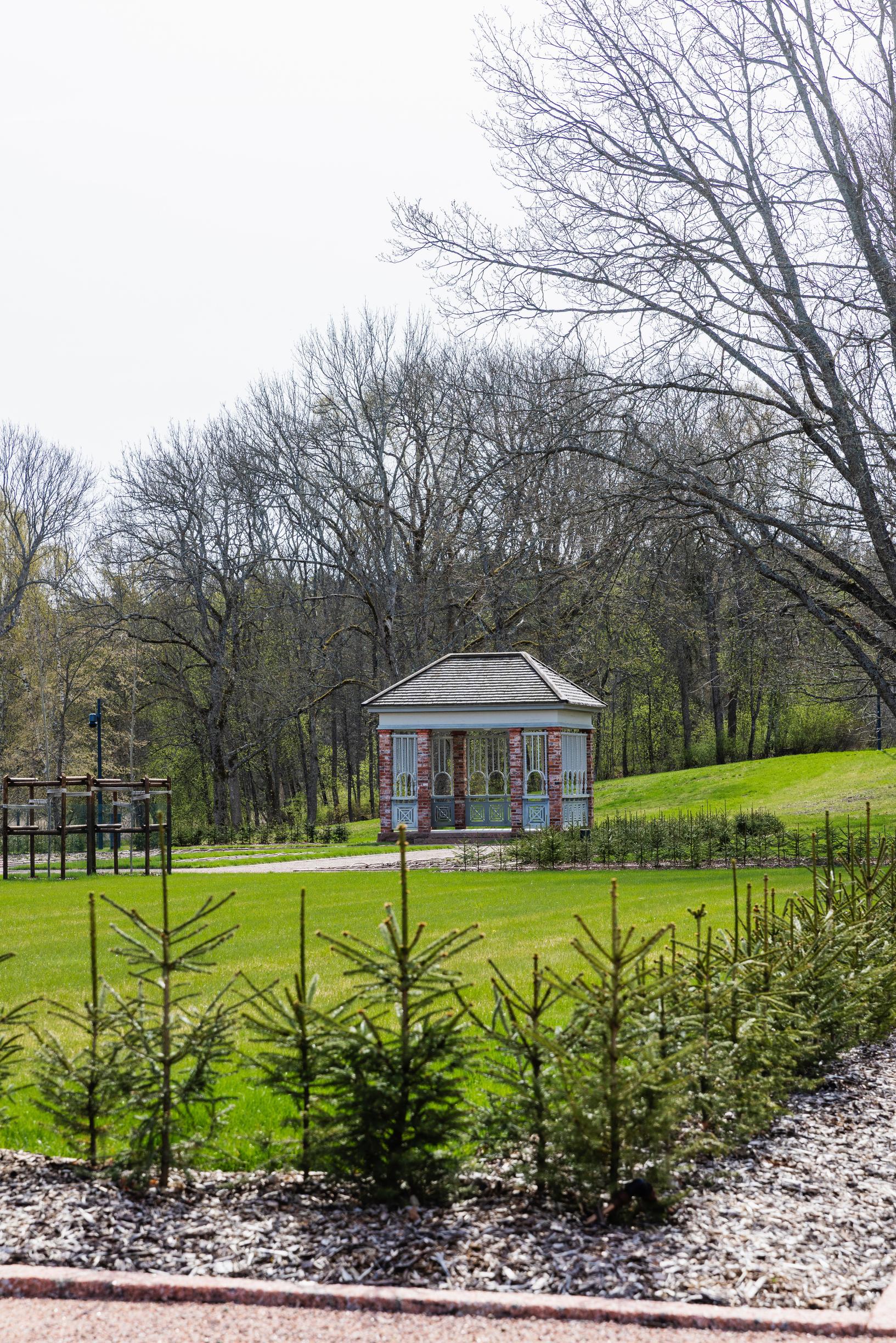
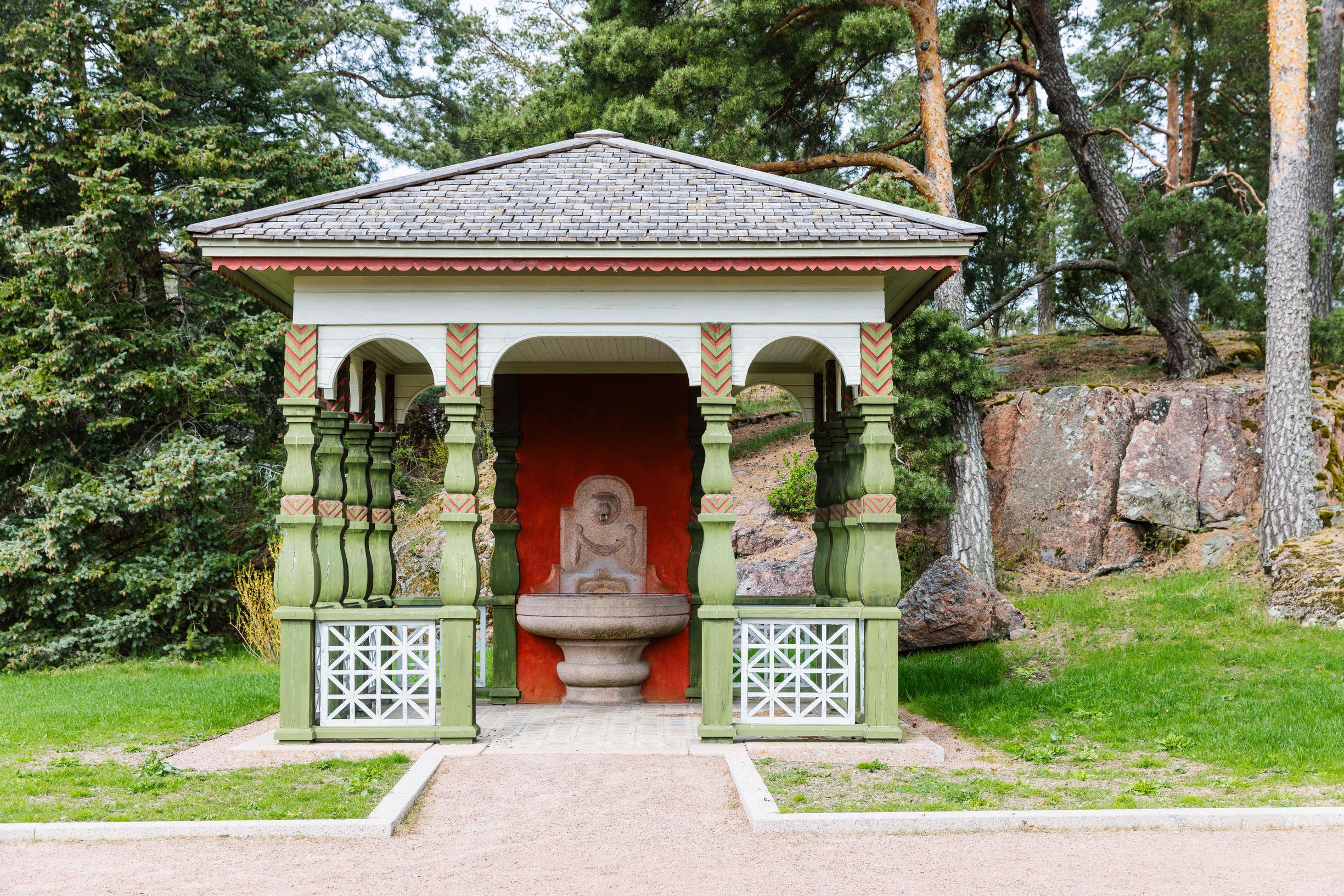
The last time Kultaranta was comprehensively renovated was in the 1960s, when the garden was also more extensively restored. Before that, it was refurbished in the 1920s, when Kultaranta first became the Finnish presidents’ summer residence. The building was also expanded in 1930, changing its original L-shape into the current rectangular form.
In the most recent and certainly most thorough renovation of Kultaranta, the aim was to identify, preserve, and restore the park’s and the buildings’ cultural and historical values. In restoring the protected buildings, the color palette and interiors were chosen to reflect both the building’s completion date and the 1920s.
Kultaranta was ultramodern for its time.
While the garden is varied, surprising, and captivating, the Granite Castle itself is grand and imposing, with a slightly austere feel. From the top of its tall tower, you can see across the sea and the entire town of Naantali.
The castle, which has nineteen rooms, features a façade clad with granite blocks of various sizes. Instead of medieval castles, Lars Sonck drew inspiration for the façade and its details from stone buildings by American and Scottish architects of the time. Consequently, Kultaranta was ultramodern in its day.
The ground floor holds the reception rooms, while the upper floor has bedrooms and guest rooms. Both floors’ layouts have stayed largely the same.
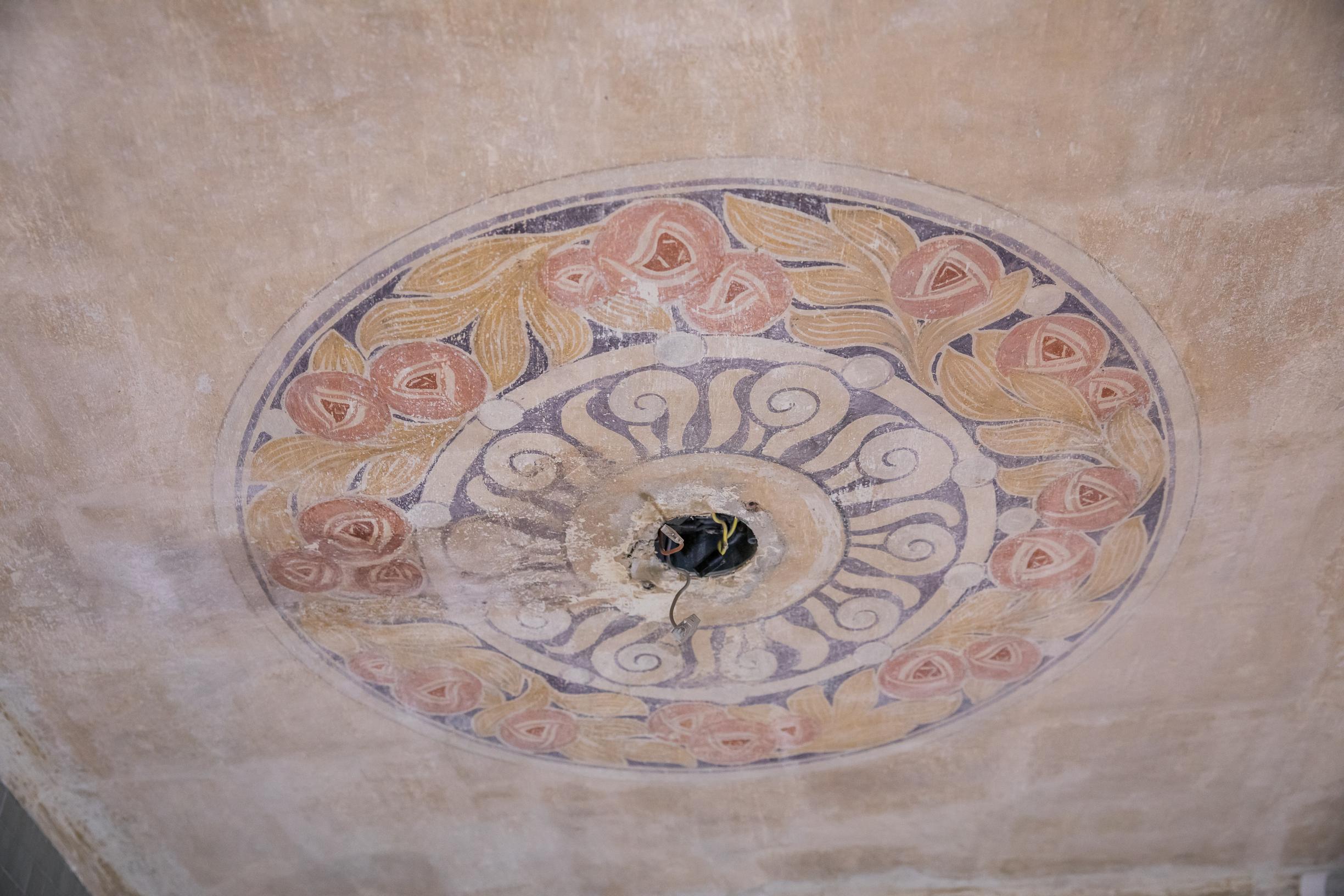
Even presidential residences are not immune to moisture damage. The villa had issues in its early years when the Olssons’ rooftop garden was placed on the flat roof. This was confirmed during demolition work, when one of the garden’s fountains was found in the attic. Later on, moisture kept rising and festering in the structure, causing some stones to shift, and paint and plaster to crack inside.
During the renovation, the natural stone cladding on the tower, as well as the southeast and southwest façades, was removed. Harmful materials were cleared from behind the structure, and everything was properly dried. Finally, the stones were put back and regrouted. The foundations were also waterproofed and drained.
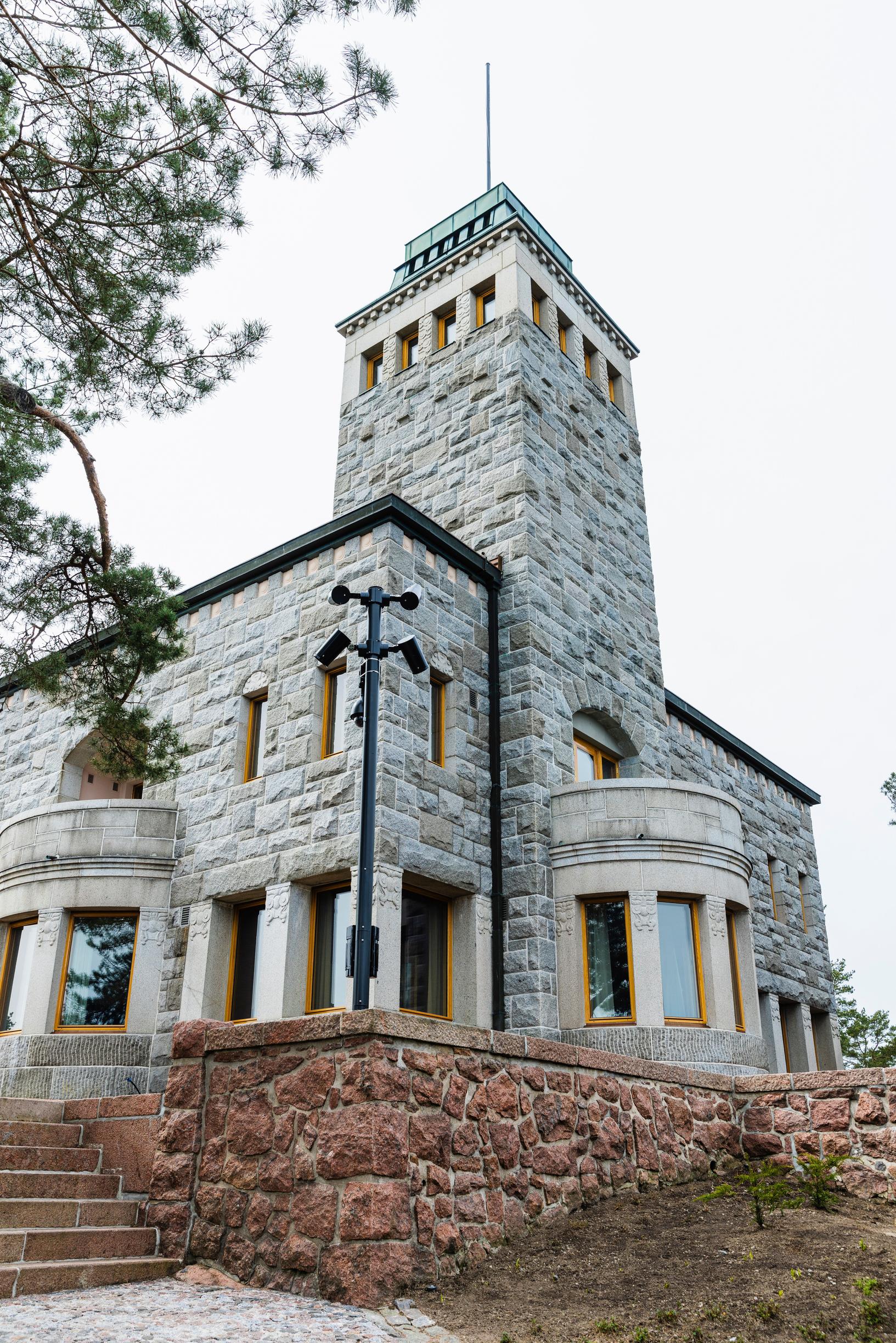
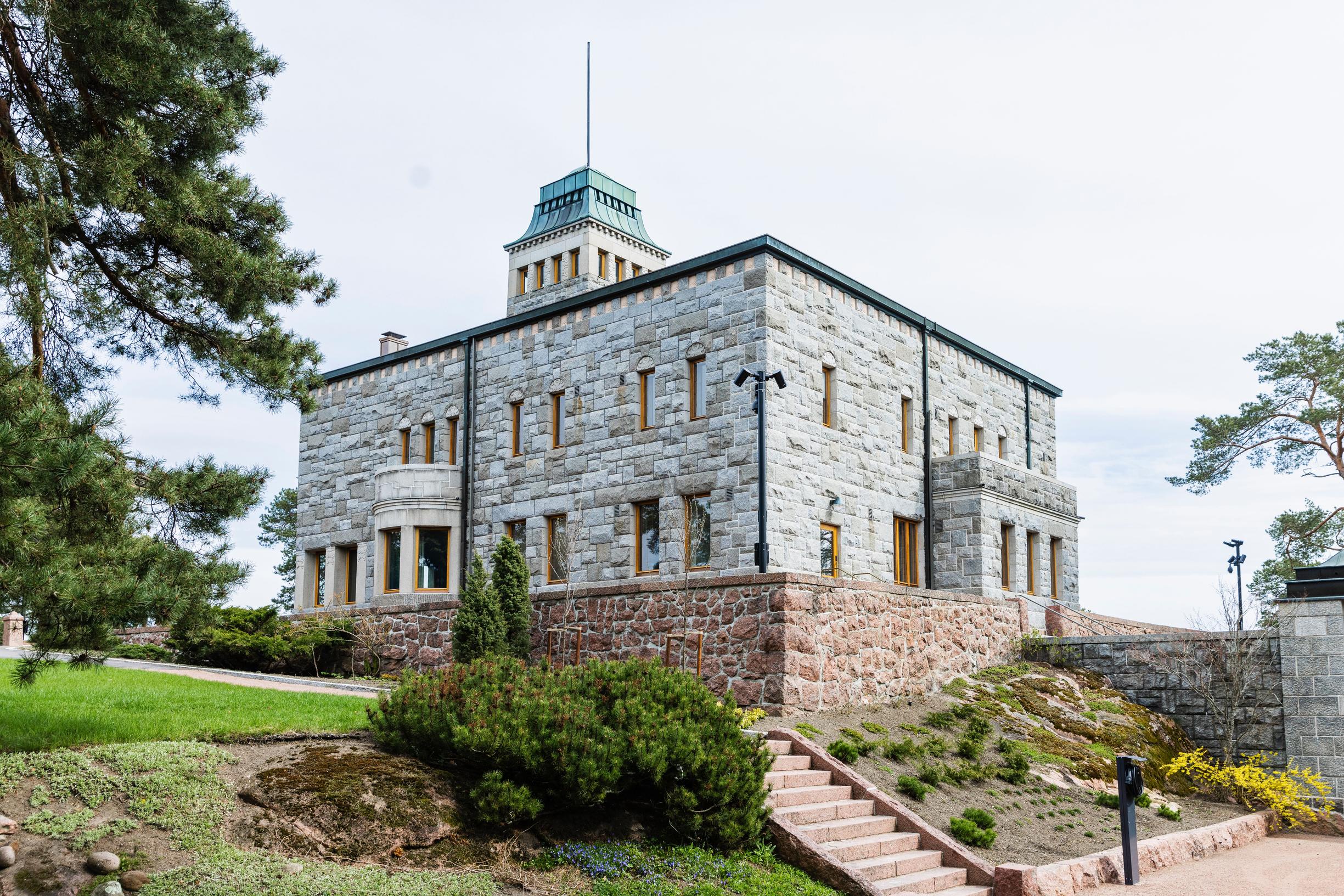
Kultaranta was shaped by 1980s choices that created a stark reception room that lacked warmth and personality. The atmosphere has now changed.
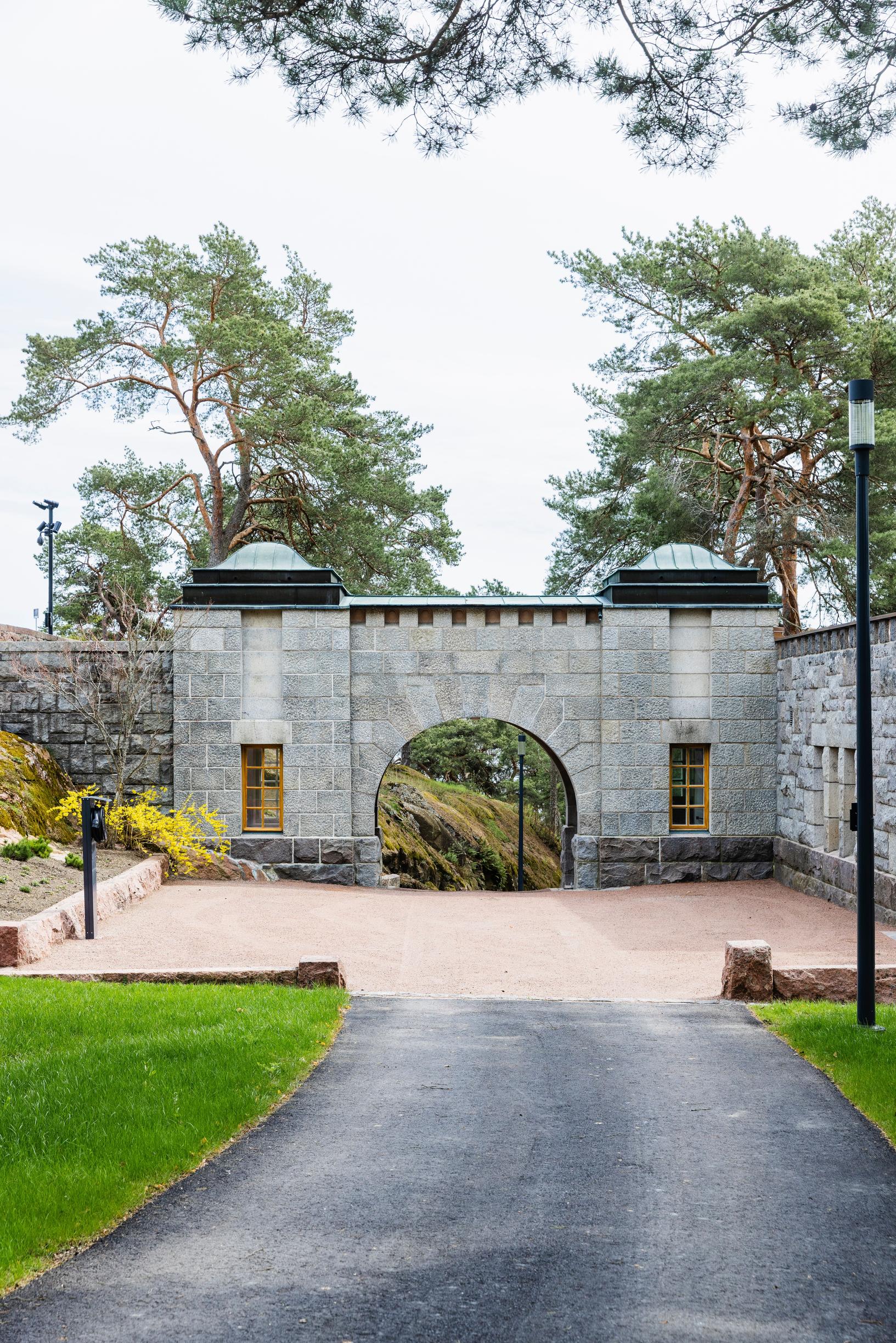
Over the decades, Kultaranta’s interior has been altered alongside changing style preferences. Many recall Kultaranta in the early 1980s, featuring white walls, light floors, and Artek furniture upholstered in pale fabrics—creating a stark reception room that lacked warmth and personality. The interior design had lost its connection to the architecture, even though the building was originally conceived as a coherent Gesamtkunstwerk, interior included. Now the situation is different.
Designers studied the layers of paint and color beneath the surfaces, as well as old photographs, to uncover clues about the original furniture, moldings, and other details. On the stairway to the upper floor, they discovered plant-themed Art Nouveau ornaments, and in several rooms, classicist painted wood trim was restored to walls and ceilings.
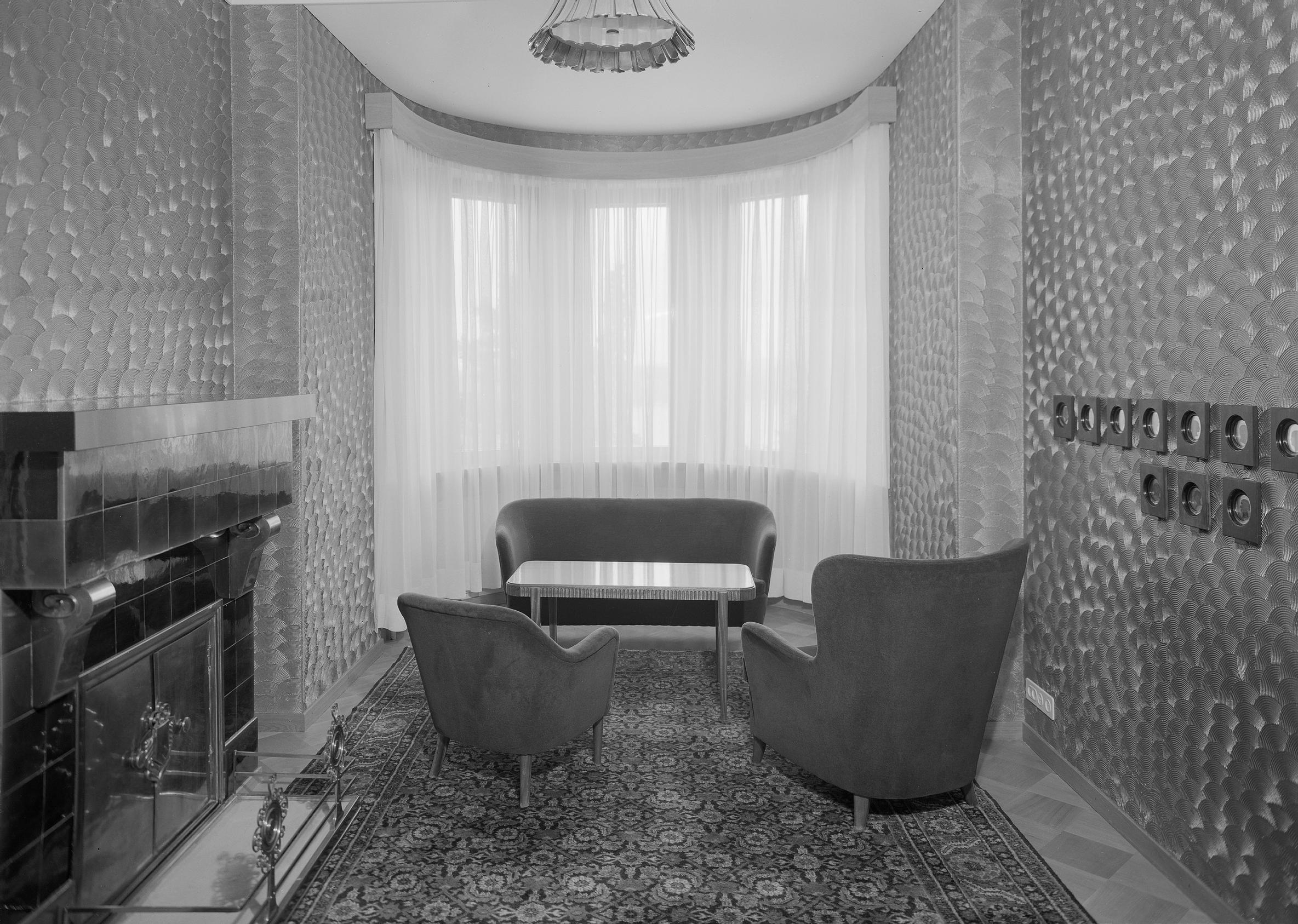
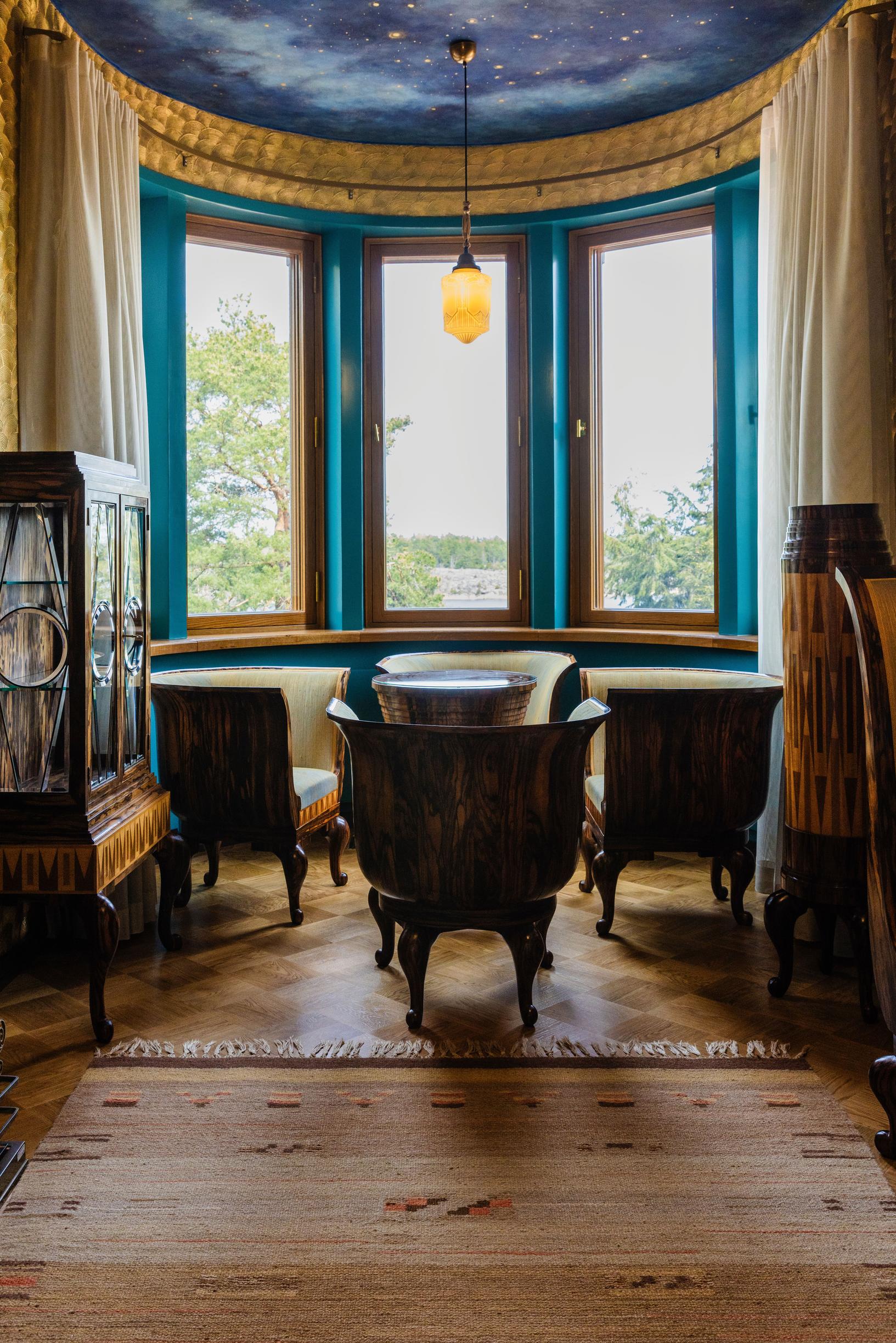
You can see the change in the room Tähtikabinetti, for instance, with its golden stucco walls and a blue-and-gold night sky now painted by a conservator on the bay ceiling facing the sea. The original painting was by Anna-Lena Huss. She also created the Art Deco–style painting in the dining room, which the conservator uncovered piece by piece. These paintings date to 1930, when Huss’s brother, architect Gunnar Wahlroos, carried out a major renovation and oversaw the interior design.
What remains of this Art Deco–influenced classicist interior includes the original furniture in the dining room, the president’s and spouse’s bedrooms, the spouse’s dressing area, and the upper hall—along with the Tähtikabinetti’s gilded stucco walls and Taito lighting fixtures.
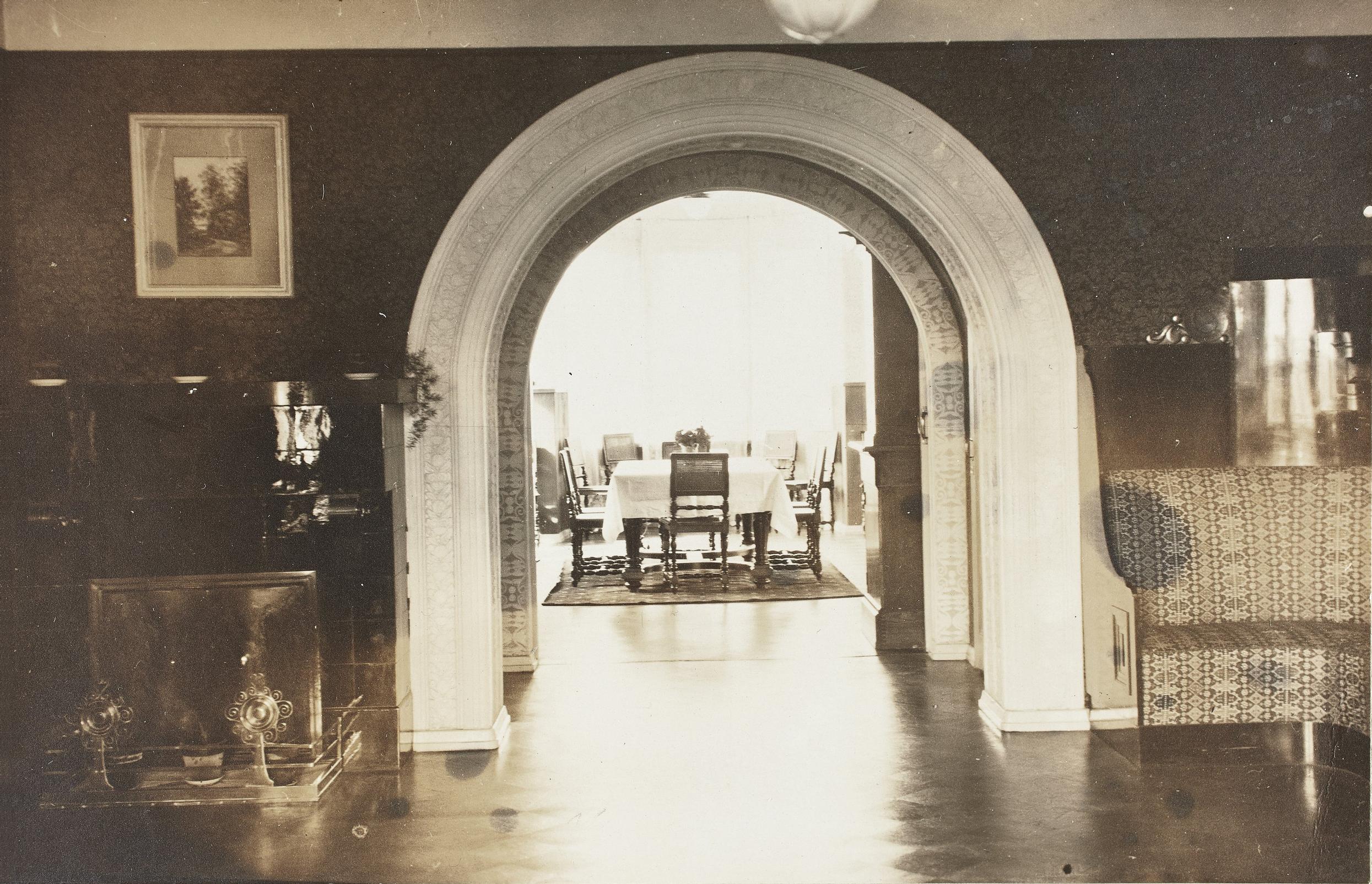
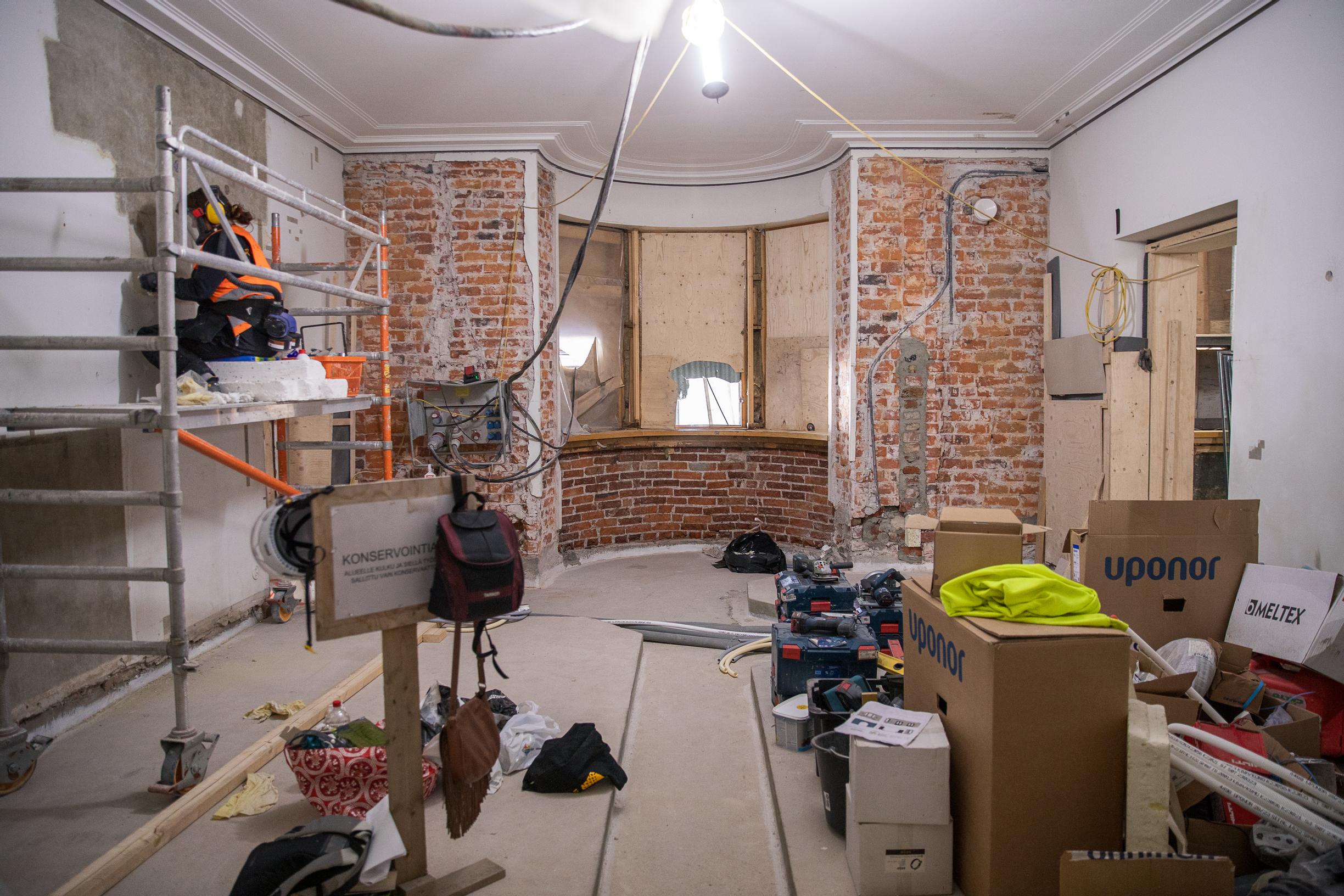

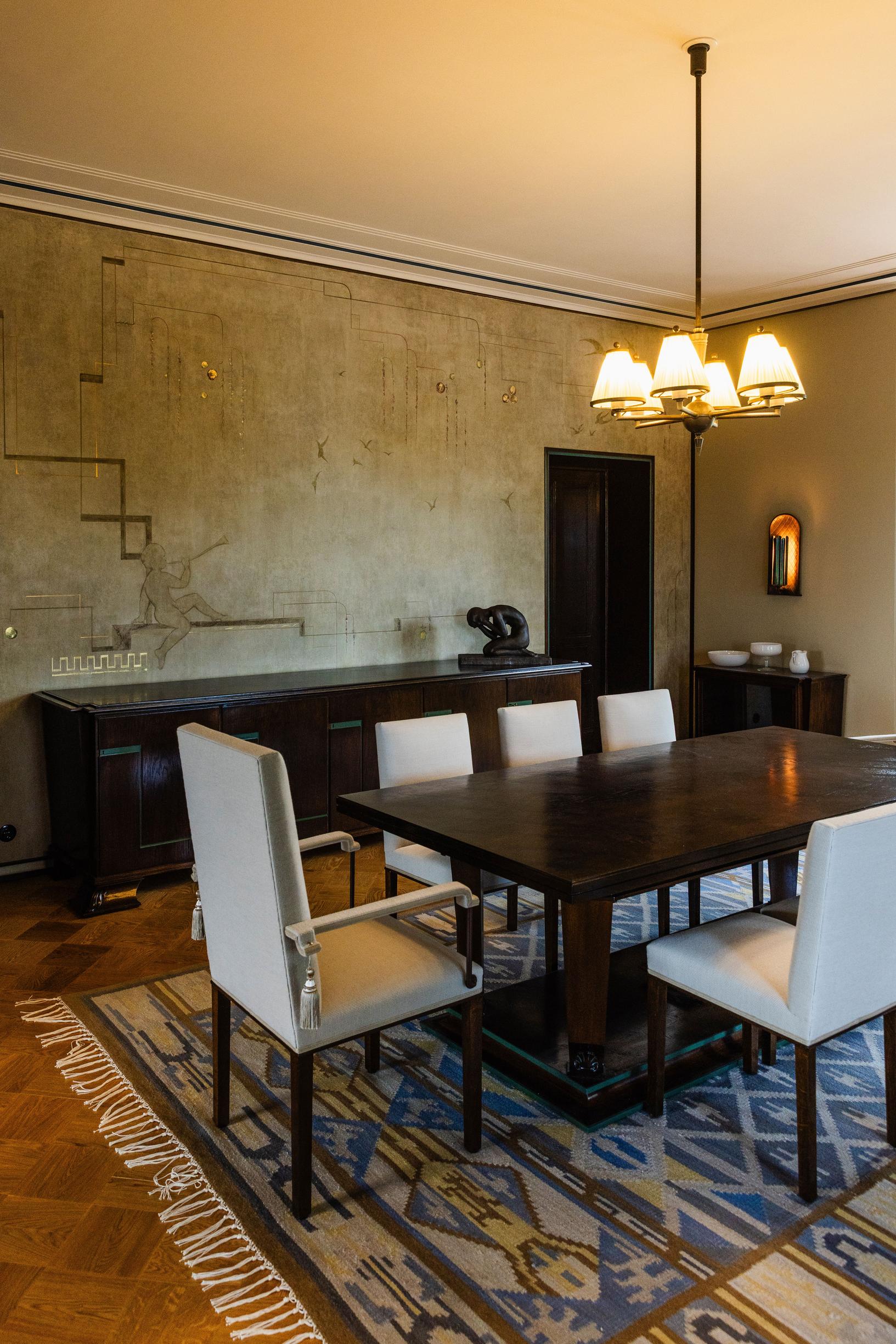
From the oldest interior, designed by Lars Sonck and interior architect Gösta Kulvik, a surprising amount has survived: surface elements like decorative reliefs and ceiling profiles, staircases, and the furniture in what is now the Tähtikabinetti and the blue veranda. Miraculously, some of the original furniture has even made its way back to Kultaranta.
All the furniture was refurbished, and some pieces needed new parts. During the project, over 500 items were cataloged, and 260 of them were restored and placed in buildings around the estate.
An extra layer of character comes from the artwork chosen by the current presidential couple, drawn from the National Gallery’s collections. In the President’s study, there are paintings by Väinö Blomstedt, Akseli Gallen-Kallela and Albert Edelfelt, while the living room features works by Helene Schjerfbeck, Fanny Churberg and Berndt Lindholm.
All this painstaking work, down to the smallest detail, cost 52.4 million euros. But preserving irreplaceable cultural landmarks is of tremendous importance—it’s a true cultural endeavor.

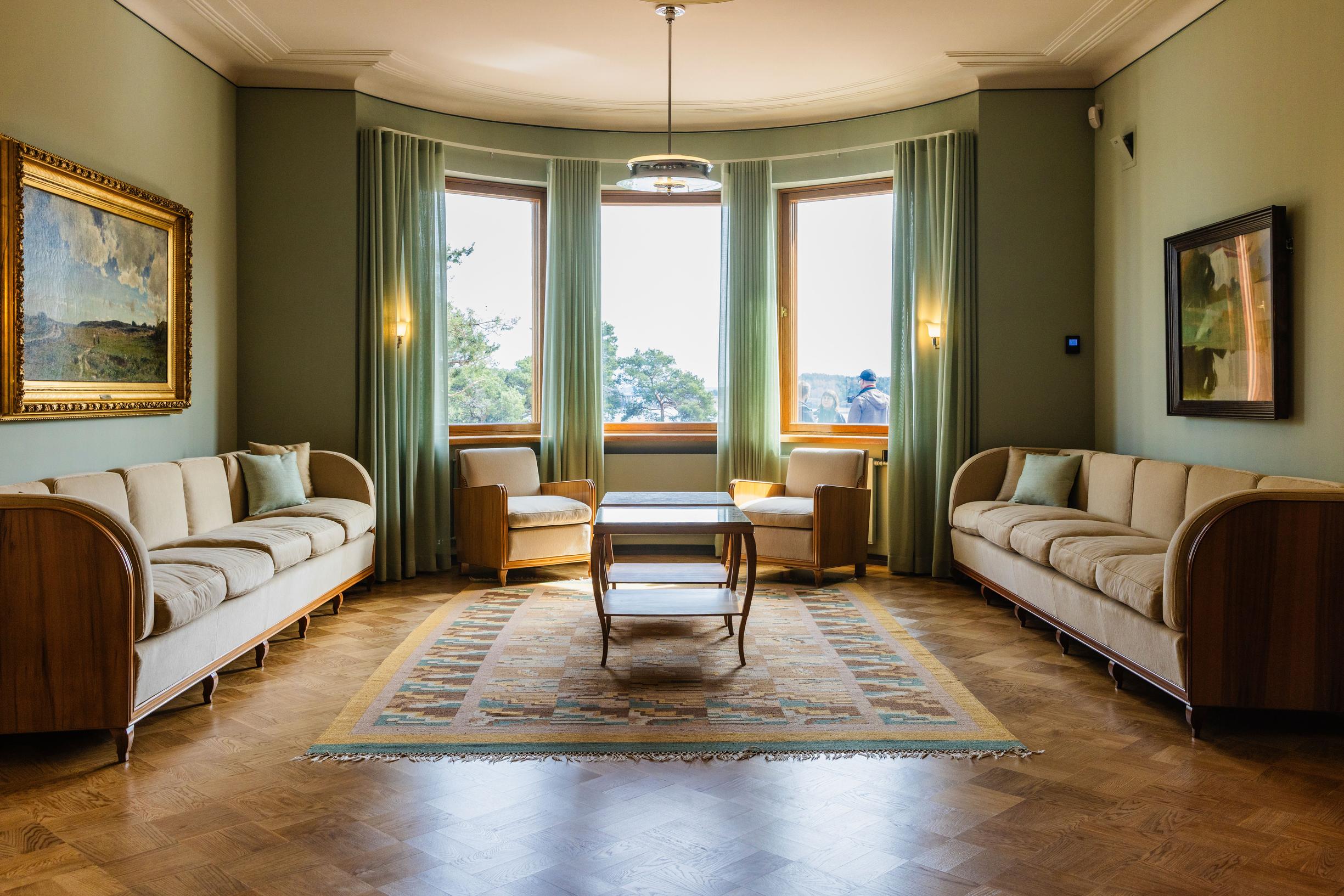
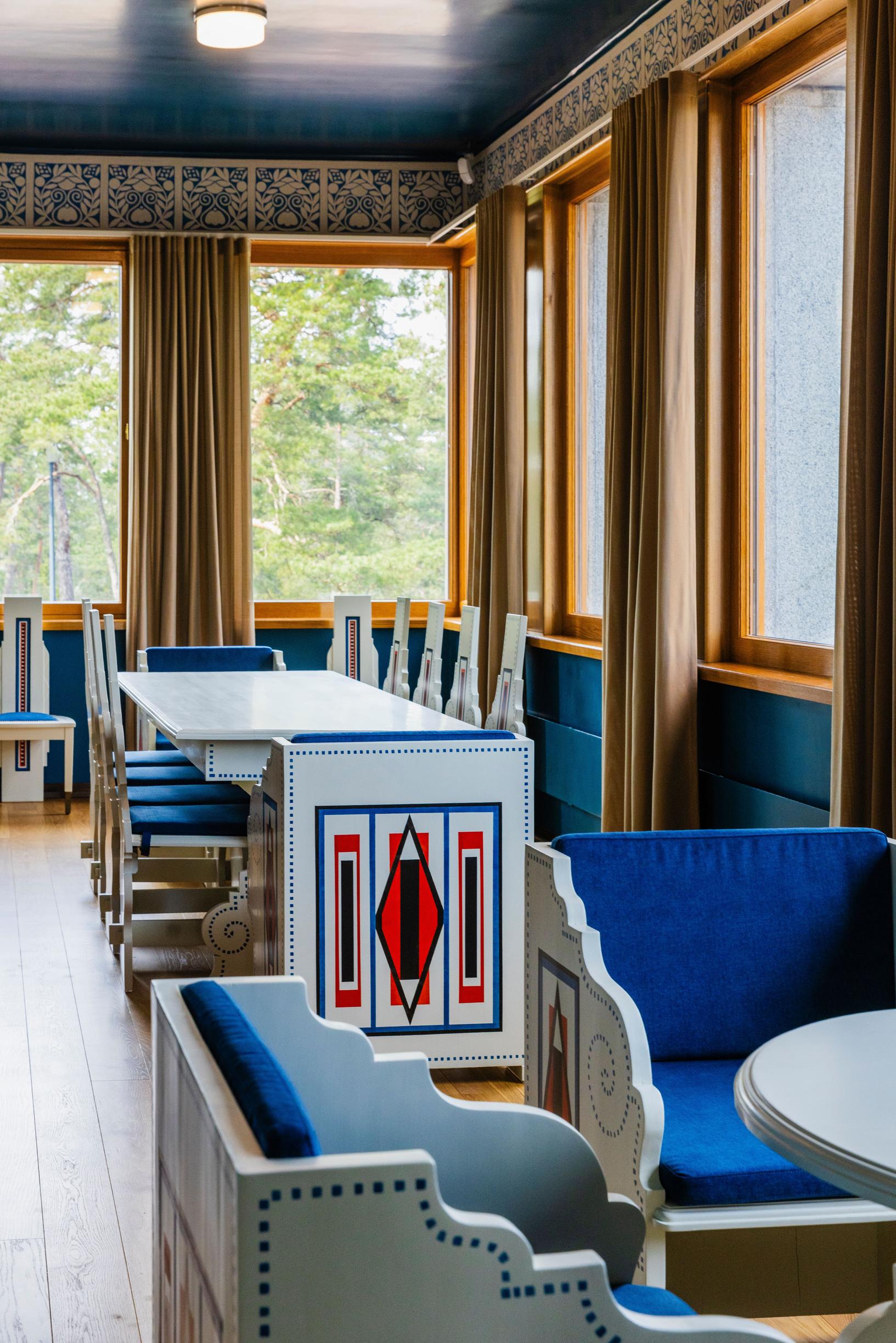
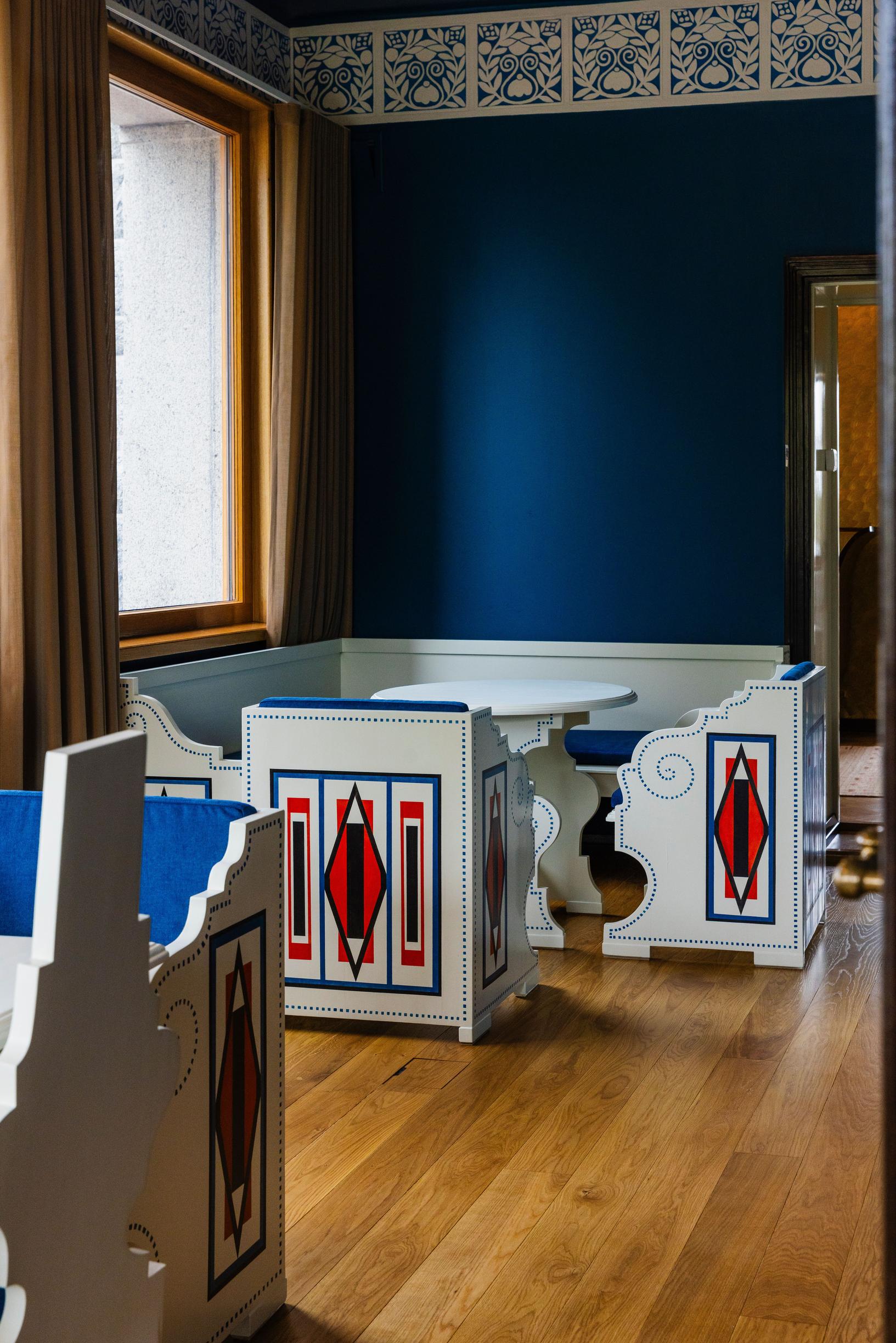
Now that everything is ready and set to last for decades, Finland’s current president, Alexander Stubb and his spouse Suzanne Innes-Stubb, can spend their first summer in the villa together.
The public can also experience Kultaranta’s magic, as its garden is open from early June. Tickets are best booked in advance at visitnaantali.com.
